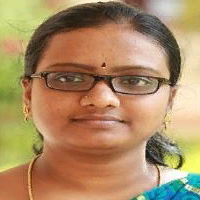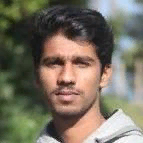[1]Rinki Singh, Manideep Kaur, OCR for Telugu Script Using Back-Propagation Based Classifier, International Journal of Information Technology and Knowledge Management, Vol. 2, No. 2, 2010, pp. 639-643.
[2]Suman V Patgar, Vasudev T, Murali S, A system for detection of fabrication in photocopy document, Journal of Computer Science & Information Technology, Vol. 5, No. 14, 2015, pp. 29–35.
[3]B. Verma, M. Blumenstein, S. Kulkarni, Recent achievements in off-line handwriting recognition systems, School of Information Technology, Griffith University, Gold Coast Campus.
[4]C. V. Jawahar, M. N. S. S. K. Pavan Kumar, S. S. Ravi Kiran, A Bilingual OCR for Hindi-Telugu Documents and its Applications, Centre for Visual Information Technology, International Institute of Information Technology, Hyderabad.
[5]N. Shobha Rani, T. Vasudev, "A Generic Line Elimination Methodology using Circular Masks for Printed and Handwritten Document Images ", Emerging research in computing, information, communication and applications ELSEVIER science and technology, Vol. 3(1), 2014, pp. 589-594.
[6]Rangachar kasturi, Lawrence O'gorman, Venu govindaraju, Document image analysis: A primer, Sadhana, Vol. 27, No. 1, 2002, pp. 3–22.
[7]Nallapareddy Priyanka, Srikanta Pal, Ranju Mandal, Line and word segmentation approach for printed documents, IJCA Special Issue on Recent Trends in Image Processing and Pattern Recognition, Vol. 1 2010, pp. 30-36.
[8]R. Zhang, T. T. Tjhung, Senior Member, IEEE, H. J. Hu, and P. He, Window Function and Interpolation Algorithm for OFDM Frequency-Offset Correction, IEEE transactions on vehicular technology, Vol. 52, No. 3, 2003, pp. 654-670.
[9]Ryszard S. Choras, Image Feature extraction techniques and their applications for CBIR and Biometrics Systems, International journal of biology and biomedical engineering, Vol. 1, No. 1, 2007, pp. 6-16.
[10]Pooja Kamavisdar, Sonam Saluja, Sonu Agrawal, A Survey on Image Classification Approaches and Techniques, International Journal of Advanced Research in Computer and Communication Engineering Vol. 2, No. 1, 2013, pp. 2278-1021.
[11]Mark Nixon, Alberto Aguado, Feature extraction and Image processing", Second Edition, Academic Press, Elsevier, London, UK, 2002.
[12]Yafang Xue, Optical Character Recognition, Department of Biomedical Engineering, University of Michigan, 2014.
[13]Avneet Kaur, Lakhwinder Kaur, Savita Gupta, Image Recognition using Coefficient of Correlation and Structural SIMilarity Index in Uncontrolled Environment, International Journal of Computer), Vol. 59, No.5, 2012, Applications pp. 0975 – 8887.
[14]Jangala. Sasi Kiran, N. Vijaya Kumar, N. Sashi Prabha, M. Kavya, A Literature Survey on Digital Image Processing techniques in character recognition of Indian languages, International Journal of Computer Science and Information Technologies, Vol. 6, No. 3, 2015, pp. 2065-2069.
[15]M. Shalini, B. Indira, Automatic Character Recognition of Indian Languages – A brief Survey, International Journal of Innovative Science, Engineering & Technology, Vol. 1 No. 2, 2014, pp. 131-138.
[16]E.Kavallieratou, N.Fakotakis and G.Kokkinakis, Handwritten Character Recognition based on Structural Characteristics, Proceedings of the 16th International Conference of the International Association of Pattern Recognition, Vol. 3, 2002, pp. 139-142.
[17]S. Arora, D. Bhattacharjee, M. Nasipuri, D. K. Basu, M. Kundu, Application of statistical features in handwritten Devanagari character recognition, International Journal of Recent Trends in Engineering, vol. 2, 2009, pp. 40–42.
[18]Dimitri A. Lisin, Marwan A. Mattar, Matthew B. Blaschko, Mark C. Benfield, Erik G. Learned-Miller, Combining Local and Global Image Features for Object Class Recognition, Proceedings of the IEEE Computer Society Conference on Computer Vision and Pattern Recognition, Vol. 3, 2005, pp. 47-55.
[19]John D. Evans, XML for Image and Map Annotations (XIMA) Draft Candidate Interface Specification, Version 0.4, NASA Digital Earth Office, Goddard Space Flight Center, Greenbelt, 2001.
[20]Swapnil Behle, Development of OHWR system for Hindi, C-DAC, Pune, 2013.
[21]Majid Ziaratban, Karim Faez, Farhad Faradji, Language based feature exraction using template matching in Farsi/Arabic handwritten numeral recognition, Ninth International Conference on Document Analysis and Recognition, vol. 1, 2007, pp. 297–301.
[22]Sunny Kumar, Pratibha Sharma, Offline Handwritten & Typewritten Character Recognition using Template Matching, International Journal of Computer Science & Engineering Technology, Vol. 4 No. 06, 2013, pp. 818-825.
[23]Danish Nadeem, Saleha Rizvi, "Character recognition using template matching", Project report, Department of Computer Science, Jamia Millia Islamia, New Delhi, 2015.
[24]Nikhil Rajiv Pai, Vijaykumar S. Kolkure, Design and implementation of optical character recognition using template matching for multi fonts /size, International Journal of Research in Engineering and Technology, Vol. 4, No. 2, 2015, pp. 398-400.
[25]Mo Wenying, Ding Zuchun, A Digital Character Recognition Algorithm Based on the Template Weighted Match Degree, International Journal of Smart Home, Vol. 7, No. 3, 2013, pp. 53-60.
[26]Jatin M Patil, Ashok P. Mane, Multi Font And Size Optical Character Recognition Using Template Matching, International Journal of Emerging Technology and Advanced Engineering, Vol. 3, No. 1, 2013, pp. 504-506.
[27]Soumendu Das, Sreeparna Banerjee, An Algorithm for Japanese Character Recognition, International Journal of Image, Graphics and Signal Processing (IJIGSP), Vol. 7, No. 1, 2014, pp. 9-15.
[28]Md. Mahbubar Rahman, M. A. H. Akhand, Shahidul Islam, Pintu Chandra Shill, M. M. Hafizur Rahman, Bangla Handwritten Character Recognition using Convolutional Neural Network, International Journal of Image, Graphics and Signal Processing (IJIGSP), Vol. 7, No. 8, 2015, pp. 42-49.


